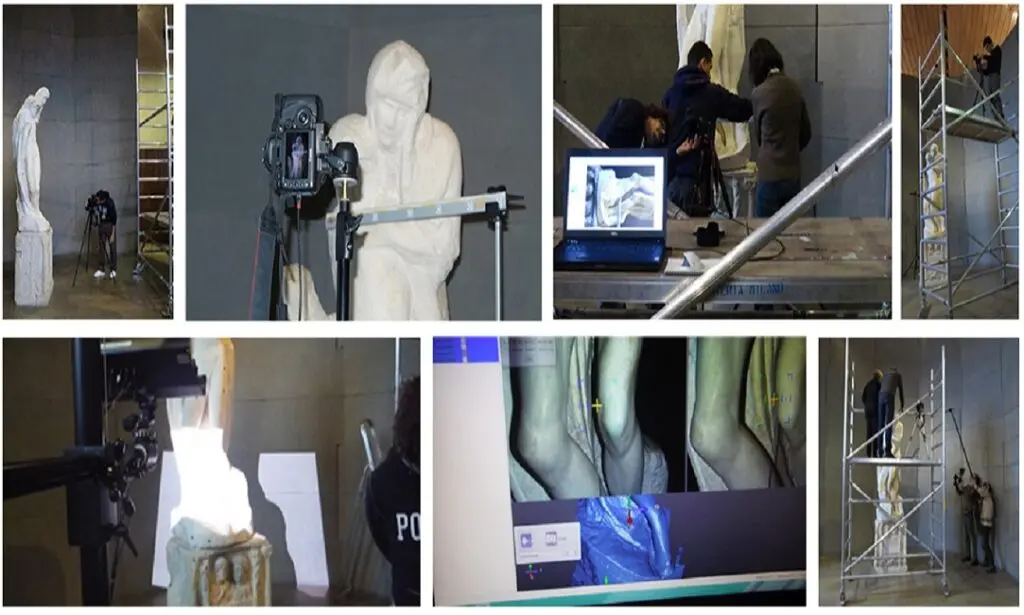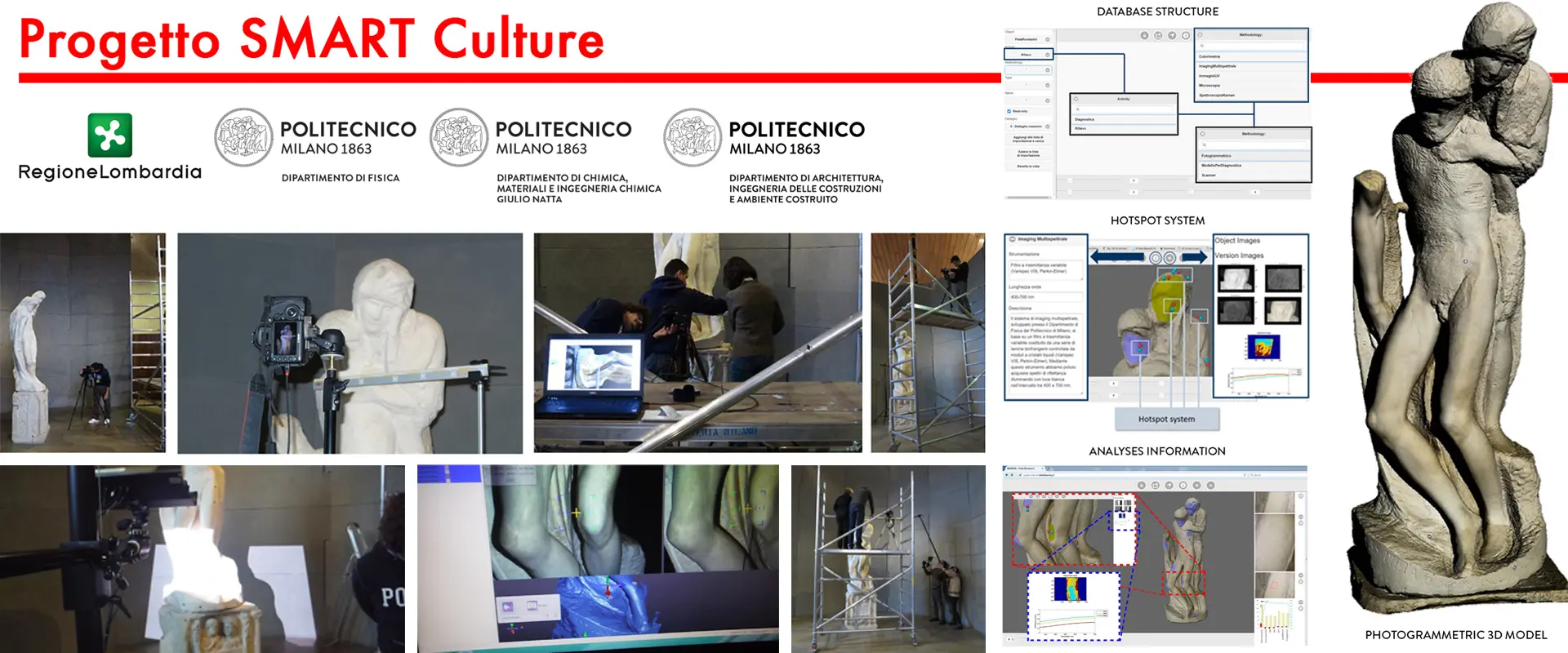Smart culture project - Rondanini Pietà

2013
The 3Dsurvey Group took part in the activities of the “SMART CULTURE” project, which was financed by Regione Lombardia, FESR-POR Competition 2007-2013, Smart Cities and Communities Call 2013 (CUP-E48C13000470009); the lead for the Politecnico di Milano was Professor G. Valentini from the Department of Physics. The project had the aim of creating a platform that could guarantee easy access to three-dimensional models of works of art from the world of cultural assets.
The platform has the aim of supporting the work of specialists and technicians that can interrogate the models in order to obtain information and insights regarding the technical and scientific analyses carried out. The system is also an advanced diagnostic tool intended for the safeguarding of the monitored items. In particular, the activities related to the following objectives: OR1: integration platform; OR3: innovative multi-digitalisation models; OR7: experimentation. Michelangelo’s Rondanini Pietà statue housed at the Castello Sforzesco in Milano was selected as a case study in order to define the survey and data management methodologies.
As part of the geometric survey, the 3Dsurvey Group was responsible for the photogrammetry survey of the sculpture. The geometric configuration of the survey and the apparatus employed made it possible to obtain a three-dimensional, 1:1 scale model of the statue. The 3Dsurvey Group was also responsible for creating a hybrid model of the statue, recording the photogrammetry data and the geometric data acquired using an industrial triangulating scanner which was developed by OpenTechnologies.
The chemical and physical analyses were carried out by the Department of Chemistry, the Politecnico di Milano project lead. All of the data have been incorporated into the BIM3DGS information system which is available online (www.pietarondanini.bim3dsurvey.it), having been developed on an ad hoc basis by the research group. The system is capable of managing the statue’s three-dimensional data and it is possible, through a system of “hot-spots”, to interrogate the model, receiving text and graphical information relating to the chemical and physical analyses carried out.
